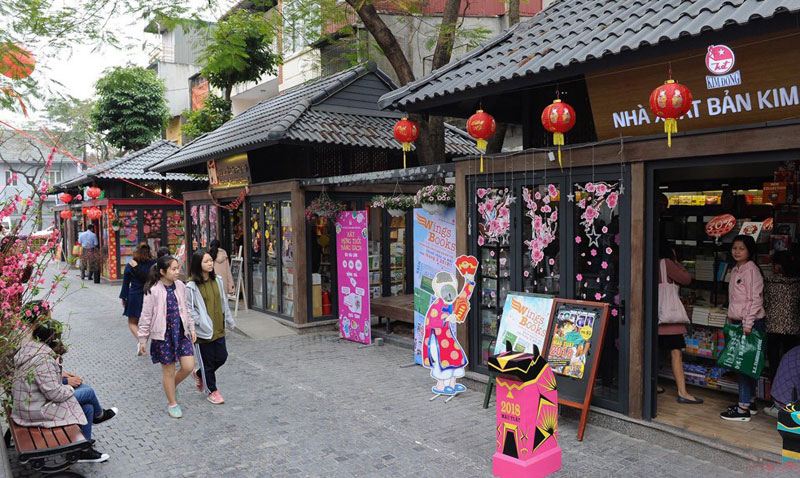Hanoi seeks to develop cultural industry after earning UNESCO Creative City
Hanoi will have to materialize with long-term programs and action plans the city's vision and policies, create favorable conditions to take the field of design to new heights.
Twenty years after being honored as the City for Peace by UNESCO, Hanoi became a member of UNESCO's Network of Creative Cities in the “Design” category in 2019, which brings the capital city to a new height and opens up opportunities for it to develop the cultural industry.
These titles will enhance the position of Hanoi, with a forward-looking vision and the national aspiration to become an innovative and responsible member in the regional and in the world community.
| Hanoi book street. Photo: Nam Nguyen |
Hanoi became one of the 66 cities in the world to be recognized as UNESCO Creative City in October 2019, on the occasion of World Cities’ Day (October 31).
Hanoi chose the “Design” category for the postulation to the title of Creative City because this field may give the capital more opportunities when it comes to international integration.
The “Design” was also chosen for running by other 31 cities worldwide, of which 12 cities chose the category as a pillar field to develop into creative cities.
According to UNESCO Chief Representative in Vietnam Michael Croft, a vision of Hanoi as a Creative Capital will act as a catalyst to create new development opportunities as well as help to drive inclusive and sustainable growth in a time of economic uncertainty.
Following two decades of profound expansion, Hanoi now seeks to position itself at the forefront of the rapid socio-economic transformation of Vietnam through its cultural legacy to define a new model of economic activity based on creativity and strong youth empowerment, wrote Michael Croft in an article.
Deputy Minister of Foreign Affairs cum Chairman of the Vietnam National Commission for UNESCO Le Hoai Trung said that Hanoi can meet all the criteria of creativity. However, only the “Design” category can show the vision and strategy for sustainable development which is inclusive of the other criteria and promote all of the city’s resources.
The fact that Hanoi has officially become one of the UNESCO Creative Cities has facilitated the city to turn creativity and cultural industry into the core of development; created opportunities for Hanoi to strengthen international integration; mobilized resources, knowledge and learned experiences from other member cities and from UNESCO.
“Hanoi will have to materialize with long-term programs and action plans the city's vision and policies, create favorable conditions to take the field of design to new heights, raise people’s awareness on the matter and attach it to the community to gradually realize the initiatives,” Secretary of the municipal Party Committee Vuong Dinh Hue emphasized at a high-level seminar in early October to celebrate the 1,010th anniversary of Thang Long - Hanoi and the 17th Congress of the city Party.
The “UNESCO Creative Cities” network was established in 2004 to promote international cooperation among the recognized cities. With the latest designation, UNESCO Creative Cities Network is currently comprising of 264 city members which have invested in culture and creativity in such fields as music, traditional handicraft, design, literature, digital art, and cuisine as an accelerator of sustainable development.












